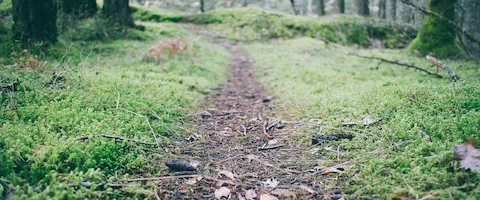These five steps will help you get on the right path for getting started successfully, while helping you strike the right balance between business and social. This article was written by Waldemar Zeiler, co-founder of Einhorn, a Berlin-based “fairstainable” condom company.
- Make sure your business model really works and that it's scalable
- Be certain that you're not a greenwasher by accident
- View “fairstainability” not as a cost, but as a magic marketing tool!
- Don’t wait for the great, disruptive social innovation idea - just go for it!
- Start now - the timing has never been better.
1. Make sure you make money and that your business is scalable!
I know it sounds too “capitalistic” for all do-gooders out there, but this is one of the most common reasons social businesses fail. Forgetting economic principles, and relying too much on the “charitable PR” effect, can bring the growth of your social business to a grinding halt. Following the first “PR orgasm” that accompanies your startup launch, you will have to find an economically sustainable way to survive in the market. It requires the same steps, and hard work, to build a 100K EUR business as it does a 1M EUR business. Why not go for the latter?
2. Make sure you are not a greenwasher by accident!
Most consumers are confused about the true meaning of all the organic, bio, fair and sustainable labels and standards in the market. By avoiding “greenwashing” – wherein companies use “green” marketing to deceive consumers into perceiving their products, policies, or motives as environmentally friendly – social entrepreneurs try to do things a little differently. The personal involvement of the founders is key; fight hard for transparency in every single step of the value chain, as well as brutal honesty on the current “fairstainability” status of your product. Nobody believes in a product that is “100% fair and sustainable” from the very beginning; start with a realistic percentage, and work your way up. Many suppliers will tell you all kinds of nonsense in order to generate sales. Visit them, take pictures, ask critical questions, and trust your gut to tell you right away whether or not they are the partners you want to have.
3. View “fairstainability” not as a cost, but as a magic marketing tool!
Treating everybody, including Mother Nature, in a fair and sustainable way implies extra costs that competitors will not have to bear. Without harnessing the power of your product’s “fairstainability” for marketing purposes, you will put yourself at a great disadvantage, especially during the start-up phase. Luckily, new forms of digital marketing allow you to beat big marketing budgets with just a little bit of ingenuity. The new currency is story-telling, and fairstainability is great content. Start your own YouTube channel, or celebrate every small bit of progress on a variety of powerful social media platforms.
4. Don’t wait for the great, disruptive social innovation idea!
The world needs fairstainable alternatives in almost every product and service segment. How about a fair toaster or hair-dryer? It is often the most common, seemingly innocuous products that do the greatest harm to the environment, as well as the workers who produce them. Using fairstainable alternatives to grab some market share from these industries will have a significant effect almost immediately. Fairphone is a great example, creating consistently sold-out products and generating 18M USD in revenue.
5. Start now – the timing will never be better!
Generation Y has got your back. The soon-to-be largest generation of the next 40 years is waiting for your alternatives to heavily marketed, greenwashing products. Your future target audience does not trust big corporations and mainstream media, and has massive purchasing power. Go get ‘em!
Originally published September 18, 2015










